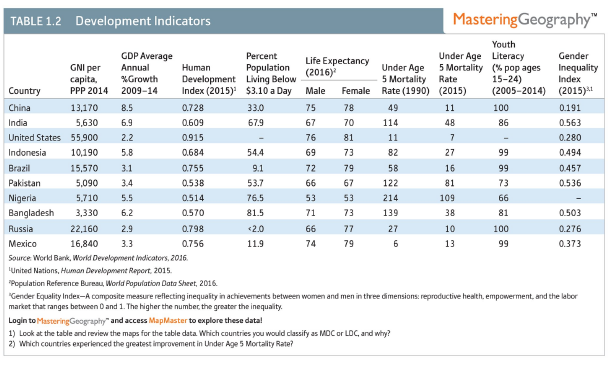Consider the table in the chapter listing the various silicate structures of common rock-forming
minerals. Determine the silicon to oxygen ratio for each type and express it as a decimal fraction. This
can be done by dividing the number of silicon atoms by the number of oxygen atoms. In the first
category (isolated tetrahedral), for example, the ratio is 1:4 or 0.25. What can you conclude from this? What will be an ideal response?
The concentration of silicon relative to oxygen increases as the complexity of the silicate structure
increases. The implication is that minerals with more complex structures will occur in more "distilled"
(fractionated) magma bodies.
You might also like to view...
Which nation below has the greatest percentage of its population living below the UN defined global poverty line?

A) India
B) China
C) Nigeria
D) Mexico
E) Pakistan
What are the eight most common elements found in the Earth's crust, listed from most common to least common (by percent)?
a. oxygen, silicon, aluminum, iron, calcium, sodium, magnesium, potassium b. oxygen, silicon, aluminum, iron, calcium, sodium, potassium, magnesium c. magnesium, potassium, sodium, calcium, iron, aluminum, silicon, oxygen d. oxygen, silicon, aluminum, iron, calcium, potassium, sodium, magnesium e. oxygen, silicon, aluminum, iron, calcium, magnesium, potassium, sodium
When the continents were assembled and mountain ranges were matched up, mountains in Scandinavia and the British Isles matched up perfectly with which North American mountain range?
A) Rocky Mountains B) Appalachian Mountains C) Sierra Nevada Mountains D) Olympic Mountains
The diffusion of folk culture in Anglo-America in the mid-17th through early 19th centuries was a two-stage process of ________.
A. relocation diffusion and expansion diffusion B. contagious diffusion and expansion diffusion C. cascade diffusion and relocation diffusion D. hierarchical diffusion and contagious diffusion